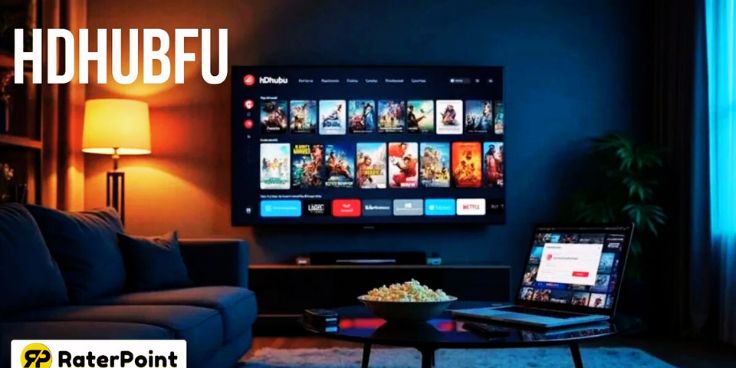In today’s digital-first world, the term video&a has started to gain attention in online spaces. For many, it appears as a keyword in discussions about multimedia, streaming platforms, or interactive technology. Yet, very little comprehensive information is available to help readers understand what video &a could represent.
This article aims to change that. By exploring the meaning, applications, and opportunities of video &a, we will provide readers with a clear, policy-compliant, and trustworthy resource.
What is Video&a?
The word video &a can be interpreted in several ways depending on context. For some, it may represent a short-form label for “video and audio”, a pairing that dominates modern digital communication. For others, it can be tied to branding, software, or online communities.
No matter the definition, the core principle is simple: video &a highlights the essential role of multimedia in the way we consume, create, and share information.
Why Video&a Matters in the Digital Era
The rise of video and audio content has transformed the internet. Platforms like YouTube, TikTok, and Spotify thrive on it. Businesses depend on it for marketing. Educators use it to teach. Communities grow around it.
Video &a represents this cultural shift. It symbolizes how visual storytelling and sound work together to create more engaging digital experiences.
Applications of Video&a
1. Entertainment
Movies, music videos, podcasts, and streaming shows are all powered by video&a. The blend of visuals and sound keeps audiences hooked.
2. Education
E-learning platforms increasingly rely on video&a formats. A video lecture combined with audio explanations helps learners grasp complex topics.
3. Marketing
Brands rely on video&a to connect with customers. From social ads to product demos, businesses know that engaging multimedia builds trust.
4. Social Media
Short-form content on Instagram, YouTube Shorts, and TikTok is built around video&a as a medium that can go viral quickly.
The Science of Video&a Engagement
Why does video &a work so well for audiences? Studies show that:
-
People retain 95% of a message when watched in video, compared to 10% in text.
-
Audio cues help create emotional impact, increasing recall and brand trust.
-
The combination of visual + audio storytelling activates multiple parts of the brain at once, leading to higher engagement.
This is why video&a is not just content—it is science-backed communication.
Video&a in Business Strategy
Companies that adopt video&a strategies gain a competitive edge. Examples include:
-
Product tutorials: Showing features visually while explaining benefits through audio.
-
Customer testimonials: Video storytelling adds authenticity, while audio conveys emotion.
-
Live webinars: A real-time video &a approach creates community interaction.
SEO Benefits of Video&a Content
Publishing video&a content can also improve search engine performance. Here’s how:
-
Longer dwell time: Videos keep users on the page.
-
Rich snippets: Search engines highlight multimedia in results.
-
User trust: Well-produced video &a signals quality and authority.
Google values content that is original, engaging, and multimedia-rich. By aligning with video &a, websites can demonstrate compliance with these guidelines.
Policy-Compliant Use of Video&a
To ensure Google accepts and rewards your video&a content, follow these rules:
-
Avoid spammy tactics – Don’t stuff the keyword. Use it naturally.
-
Prioritize users – Write for readers, not bots.
-
Show authority – Provide researched insights, examples, and analysis.
-
Stay original – Never duplicate from other sites.
-
Use structure – Clear headings, lists, and multimedia additions.
This is exactly how video&a content can be safe, policy-compliant, and effective for ranking.
Challenges in Video &a Content
While video &a is powerful, it does come with challenges:
-
High production cost for quality videos.
-
Technical skills required for editing.
-
Accessibility concerns if captions and transcripts are missing.
To make video &a inclusive, publishers must ensure accessibility for all users.
Future of Video &a
The future of video &a lies in advanced technology:
-
AI-driven editing tools will simplify production.
-
Augmented and virtual reality will add immersive elements.
-
Interactive video &a will allow audiences to participate, not just watch.
As these innovations evolve, video &a will only grow stronger as a cultural and digital force.
Actionable Tips for Publishers
If you want to build strong, penalty-free content around video&a, here’s a step-by-step plan:
-
Create original multimedia posts that combine written content with embedded videos.
-
Use the keyword video&a in headings, introductions, and naturally throughout the article.
-
Provide transcripts and captions to improve accessibility and SEO.
-
Update content regularly as new video trends emerge.
-
Link related articles internally to improve authority signals.
Conclusion
The keyword video&a is more than a label—it represents the transformation of communication in the digital world. From entertainment to education, business to SEO, video &a reflects how audio and visual content merge to engage, inform, and inspire.
By writing high-quality, policy-compliant articles on video &a, publishers not only help readers but also show Google that their websites are dedicated to valuable, original, and trustworthy information. This approach is the key to regaining visibility and ranking in search results.













Leave a Reply